Tasman Bridge
The Tasman Bridge is a five-lane bridge crossing the Derwent River, near the CBD of Hobart, Tasmania, Australia. The bridge has a total length (including approaches) of 1,395 meters (4,576 ft). It provides the main traffic route from the CBD (on the western shore) to the eastern shore - particularly Hobart International Airport and Bellerive Oval. It has a pedestrian foot way on each side, but no dedicated lane for bicycles. However, steps to the pedestrian foot way have recently been replaced with on-ramps.
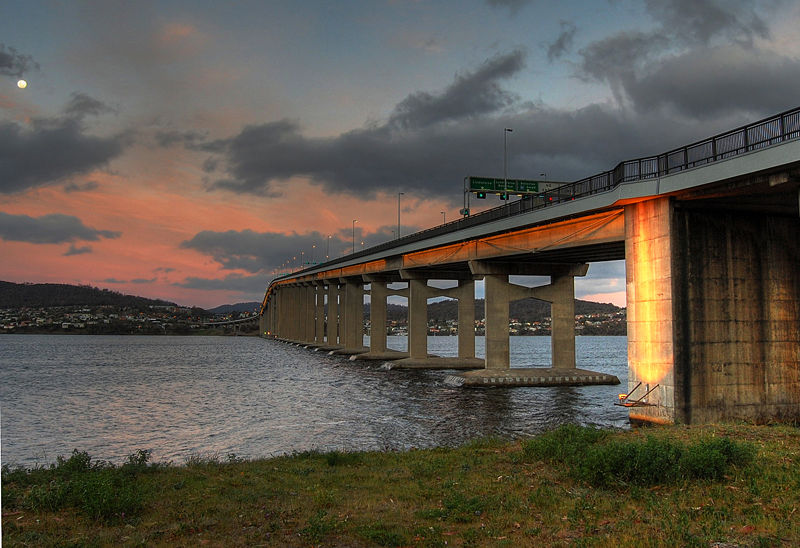
Tasman Bridge
Carries Tasman Highway
Crosses Derwent River
Locale Hobart, Tasmania
Design Prestressed concrete Girder
Total length 1,395 meters (4,576 ft)
Width 17.5 meters (57'-2 ft)
Height 60.5 meters(197 ft)
Clearance below 46 meters (150 ft)
Beginning date of construction May 1960
Completion date December 23, 1964

History
In the 1950s with the development of the Eastern shore (the old Hobart Bridge faced increasing difficulty in managing the larger volumes of traffic, and the bridge itself - constantly raising the lift span for shipping) it was decided to build a larger bridge. The total cost of the new bridge in conjunction with approach ramps and Lindisfarne interchange was in the area of £7,000,000.00. Construction commenced in May, 1960 and the bridge was first opened to traffic (2 lanes only) on August 18, 1964. The bridge was completed with all four lanes operational on December 23, 1964. It was officially opened on March 18, 1965 by H. R. H. Prince Richard, The Duke of Gloucester. During peak construction a labor force of over 400 men was employed on site.

Disaster
On Sunday January 5, 1975, at 9:27 p.m. Australian Eastern Summer Time, the Tasman Bridge was struck by the bulk ore carrier Lake Illawarra, bound for the Electrolytic Zinc Company with a cargo of 10,000 tons of zinc concentrate. It caused two pylons and three sections of concrete decking, totaling 127 meters (417 ft), to fall from the bridge and sink the ship. Seven of the ship's crewmen were killed, and five motorists died when four cars drove over the collapsed sections before the traffic was stopped. A major press shot showed a 3,000km old Holden Monaro GTS, which was owned by Frank and Sylvia Maley, along with an older FB Holden station wagon, driven by a local man Mr. Murray Ling, perched balancing on the ledge.
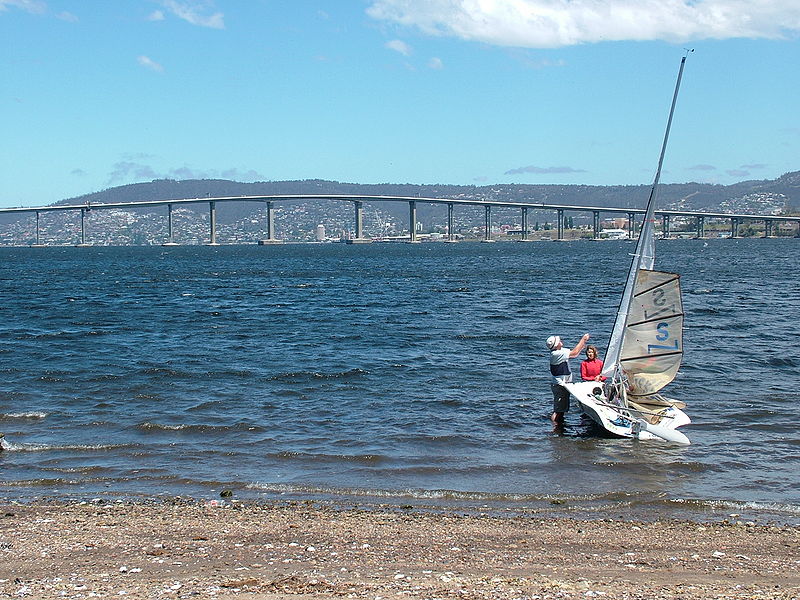
The depth of the river at this point (35 metres (115 ft) is such that the wreck of Lake Illawarra lies on the bottom, with concrete slab on top of it, without presenting a navigation hazard to smaller vessels. The breakage of an important arterial link isolated the residents in Hobart’s eastern suburbs – the relatively short drive across the Tasman Bridge to the city suddenly became a 50 kilometre (31 mi) journey via the estuary's next bridge at Bridgewater. The only other vehicular crossing within Hobart after the bridge collapsed was the Risdon Punt, a cable ferry which crossed the river from East Risdon and Risdon, some five kilometers upstream from the bridge. However, it was totally inadequate, carrying only eight cars on each crossing, and although ferries provided a service across the Derwent River, it was not until December 1975 that a single lane Bailey bridge was opened to traffic, thereby restoring some connectivity.
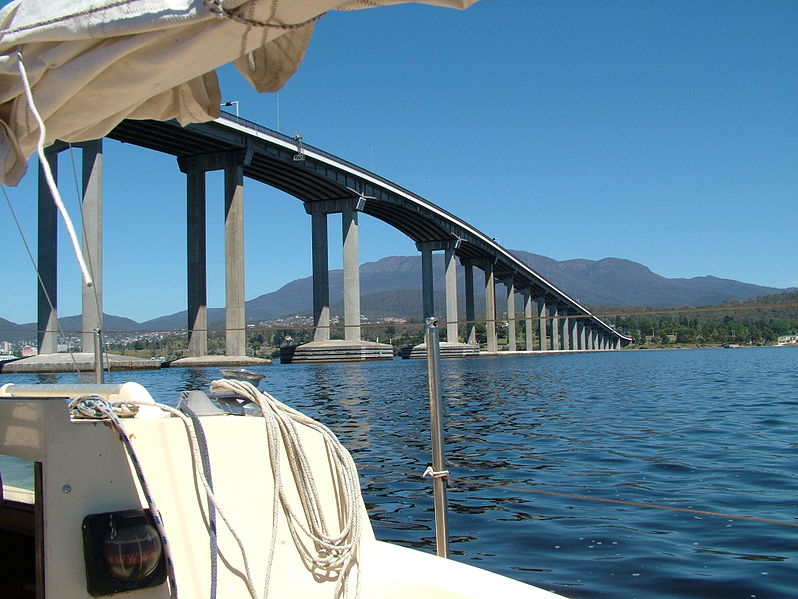
The separation of Hobart saw an immediate surge in the small and limited ferry service then operating across the river. In a primary position to provide a service were the two ships of Robert Clifford, a Tasmanian mariner. He had introduced the locally-built ferries Matthew Brady and James McCabe to the river crossing, from the Central Business District of Hobart to the eastern shore, shortly before the collision. These two ships were soon joined by the Cartela, a wooden vessel of 1912 vintage, and other ships pressed into service by the Tasmanian Government, to ferry thousands of commuters across the river. Following successful rebuilding of the Bridge, Clifford's organisation saw the ferry traffic fade quickly, but by then he had diversified into further building of ships[citation needed]. His company, Incat, has successfully exported vessels to China, Europe, and built vessels for the United States Navy. The company is one of the largest employers in Tasmania. Additionally, in 2007, a crane toppled whilst carrying out works on the bridge, and precariously hung for a number of hours off the side of the barriers, on June 20.
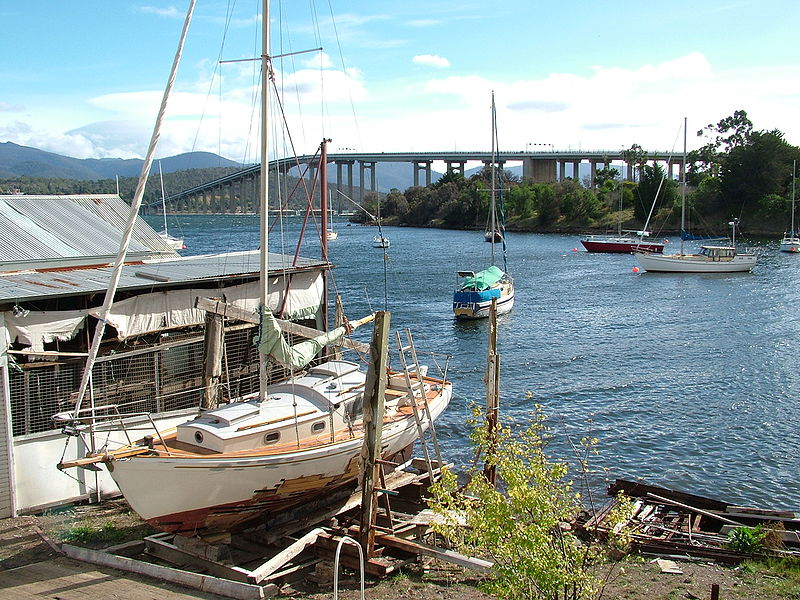
Reconstruction
Reconstruction of the Tasman Bridge commenced in October 1975. An important factor of the reconstruction is the improved safety measures. Some examples: Large vessels passing beneath the bridge must now do so slightly to the west of the original main navigation span. Personnel controlling ships (or harbor pilots) must be trained and then cleared for using the special laser lighthouse that indicates by colors whether the ship must be steered left or right to regain the centre line. All road traffic is now halted whilst large vessels transit beneath the bridge. On top of these new safety measures implemented, the bridge was further upgraded to hold a fifth lane. This upgrade included the construction of lane management systems which would enable the new middle lane to function as a Reversible lane. The system consists of a traffic light system and sign above each lane, pictured right. The signs, in conjunction with the traffic light system, employ a pulley system to periodically pull the signs over their appropriate lanes.
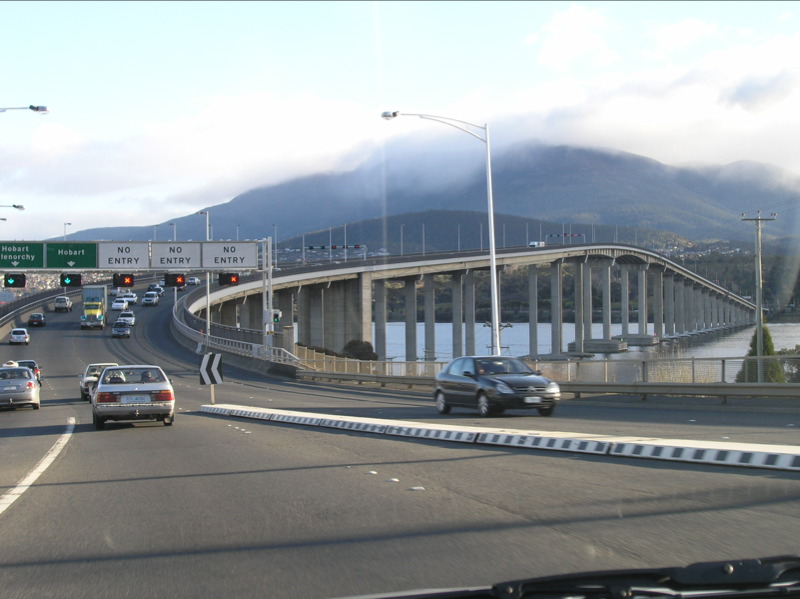
The middle lane points toward the city side (or western shore) during a.m. peak hours and points back toward the eastern shore during p.m. peak hours. The lane generally points toward the eastern shore during non-peak hours. The Tasman Bridge repair took two years and cost approximately $44 million. The bridge officially reopened on October 8, 1977.